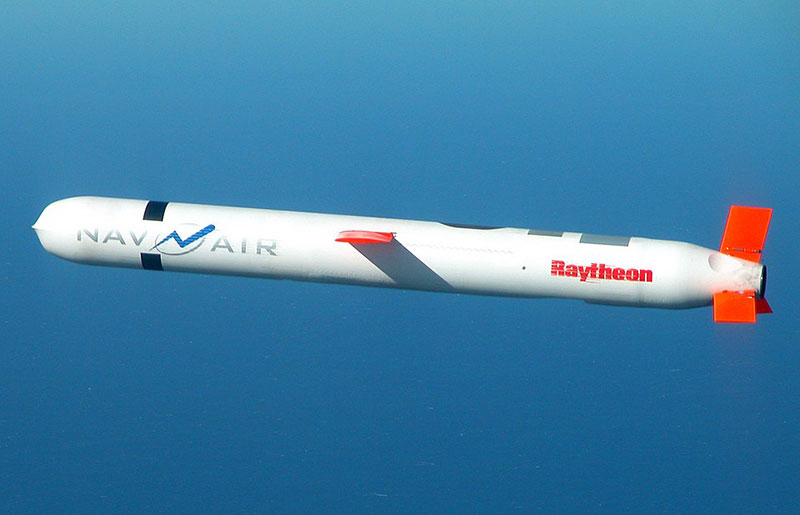
Wonder Weapons or High Risk Futility?
On Friday, October 17, President Trump backed away from Ukrainian President Zelensky’s requests for Tomahawk missiles capable of hitting deep into Russian territory. This was a substantial disappointment not only to Zelensky but also to British, French, and German leaders advocating continued war with Russia. This is despite a July 2025 Gallup poll indicating that 69 percent of Ukrainians want a negotiated end to the war “as soon as possible,” and only 24 precent want to continue the war to “victory.” The latter is down from 73 percent since 2022—a 49 percent drop in enthusiasm for the war.
According to Latest World Leaders Approval Ratings for October 2025, President Emanuel Macron of France has an approval rating of only 13 percent. Prime Minister Keir Starmer of the UK has only 24 percent, as does German Chancellor Friederich Merz. Their major opposition parties favor discontinuing support for the Ukraine War. Macron, Starmer, and Merz were all in the bottom four of 24 countries polled. President Trump ranked eighth with 43 percent approval. President Narendra Modi was first with 73 percent. Russian Federation President Putin was not listed, but generally gets over 80 percent from non-Russian sources polling from outside Russia. This is due to the substantial increase in living standards in Russia since his first election in 2000, and is consistent with Russian Presidential election results. Russian public support for Putin has increased since the beginning of the war in 2022.
The BGM-109 Tomahawk Missile has been in US Navy service since 1983. Originally manufactured by General Dynamics, it is currently manufactured only by Raytheon Missiles and Defense. With a maximum range of nearly 1,000 miles, it is considered a medium to long-range cruise missile. Its modular design allows for a wide variety of warheads, guidance systems, electronic warfare, and counter-electronic warfare systems. It has had four major upgrades, the latest by Raytheon are Block IV in 2016 and Block V in 2022. However, its systems have been continuously upgraded in smaller increments since then.
The Block IV Tomahawks cost $1.87 million each in 2017. Block V Tomahawks cost $2.0 million each in 2023. Few Tomahawks have been manufactured in 2024 and 2025. Inventory has begun to run low.
The Tomahawk is a little over 18-feet long without a booster rocket and 20.5 feet-long with a booster. Depending on the load and booster, it weighs between 2,900 and 3,500 pounds. Its diameter is only 20.4 inches. In full cruise flight, its wingspan is 8.75 feet.
The Tomahawk is generally launched from surface ships and submarines, but there is a land-based version not currently in use. This is presumably what would be given to Ukraine, but would probably not be available until 2026.
Tomahawks normally carry a variety of high-explosive conventional warheads, including deep penetrating block-busters, and anti-personnel cluster-bombs. But many, especially submarine based missiles carry nuclear warheads in the 5 to 200 kiloton range.
At middle ranges of hundreds of miles, Tomahawks are incredibly accurate, hitting within 30 feet of programed targets.
One relative weakness of the Tomahawk is that its maximum speed is only Mach 0,74 or 570 mph.
However, another tremendous advantage besides astonishing accuracy is that its flight altitude is only 98 to 164 feet, using a remarkably accurate digital Terrain Contour Matching (TERCOM) system, making it difficult to detect by most air-defense systems. TERCOM also continually checks the accuracy of its programmed route and makes necessary corrections. It uses both GPS and Inertial navigational systems (INS) and can also correct its target accuracy by satellite, aircraft, and even hand-held instruments by soldiers on the ground. It can also use radar-homing. Tommyhawks can also carry multiple warheads, hitting different targets, switch targets, switch routes, and loiter for information, better timing, or rerouting. They can also hit moving targets at sea and probably on the ground from hundreds of miles away.
Tomahawks can, however, be shot down. Even in 1999, during the US and NATO war against Serbia, Serbian forces managed to shoot down some of the 218 Tomahawks launched against Serbian military and civilian targets. At least 2,000 Serbian civilians were killed in 78 days of NATO bombing unauthorized by the United Nations. A monument in Belgrade commemorates the death of 79 children there. According to open sources, the Serbs used Russian equipment and a combination of radar tracking missiles, antiaircraft guns, and electronic counter-measures.
In 2017, the Russians obtained some of the debris of a crashed Tomahawk and perhaps more wreckage from recent Tomahawk strikes in Yemen in 2024. The Russians have been specializing in air-defense at least since I was an Air Force intelligence officer from 1961 to 1964, and they are incredibly good at engineering analysis and quick defense solutions to nullify new technology threats. Their skill at this has been notably impressive in the Ukraine War.
According to a recent article by Brandon J. Weichert, Russian air-defenses are “fairly comprehensive.” They have overlapping and layered sensors and multiple tiers of interceptors working together to detect and shoot down incoming Tomahawks. They have also developed and employed highly advanced electronic warfare (EW) systems and techniques including jamming, spoofing, and deception that can degrade guidance systems, communications, and GPS signals used by cruise missiles and their supporting targeting networks. They have made this a priority for a long time.
The Russians are well aware, however, that even the best air-defense systems and networks have vulnerabilities, are subject to human error, and can be overwhelmed by the number of offensive intrusions. Israel’s “Iron Dome,” for example, was overwhelmed by the sheer numbers of Iranian missiles and drones, many of which were cheap decoys. Ukraine’s American-made and very expensive Patriot defensive missiles have been overwhelmed by the sheer number of Russian drones and missiles. Thus far, no hypersonic Russian missile has been brought down. The US may be about five years behind Russia in hypersonic missile technology, and presently has no operational hypersonic missiles. Common sense dictates that trying to bluff, bully, or provoke the Russians is unconscionably foolish and dangerous.
According to a Heritage Foundation study in early 2024, the US had about 4,000 Tomahawk missiles in its ready inventory at the end of 2023. There has been no additional production since then. Between January and March 2024, the US fired 135 Tomahawks against Houthi forces in Yemen. According to Trump, half the Houthi leadership was eliminated. This does not seem to have curtailed Houthi blockage of the Red Sea or missile attacks on Israel, however. Another 30 were fired at Iranian nuclear sites on June 22, 2025. According to Trump, Iranian nuclear capabilities were “obliterated.” This did not stop Iran from overwhelming Israel’s “Iron Dome,’ resulting in considerable destruction in Israel. About 2,193 Tomahawks were expended from 1991 to 2018. Raytheon-made Tomahawks are also used by the naval forces of the UK (120), Australia (20), and the Netherlands (20).
Does the US have a full complement of Tomahawks or have our drawdowns created a shortage? The full Tomahawk complement is classified information. However, Trump is alleged to have initially offered Zelensky only 20 to 50. Perhaps that indicates a shortage. More likely it also represents a distrust of Zelensky’s motives and judgement. Moreover, Zelensky wants to keep the war going and even escalate it to achieve completely unrealistic objectives. Zelensky is delusional and a substantial and persistent obstacle to peace.
Putin’s 2.5 hour call to Trump on Friday warned Trump that giving Tomahawk missiles to Ukraine would end any hope of a negotiated solution to the war. The Russians are now clearly winning the war, and if their concerns about correcting the “root causes” of the war—Russian existential security against hostile NATO expansion and Ukrainian cultural genocide and discriminatory legislation and practices against the 38 percent Russian minority in Ukraine—are ignored, they will correct the situation by military force. This might include all the oblasts east of the Dnieper River plus predominantly Russian Mykolaiv and Odessa. Trump immediately rejected contemplated promises to supply Zelensky with Tomahawk missiles. A meeting of Putin and Trump in Budapest, Hungary, is being scheduled in about 10 days.
The Ukrainian Army is running out of soldiers with both casualties and desertions running high. Key defensive bastions like Pokrovsk, Kupiansk, and Kramatorsk are within a few weeks or even days of falling. Thousands of Ukrainian troops are now surrounded by the infamous Russian artillery traps, called “cauldrons,” which are slaughter on a World War I scale. Russian troops have crossed the Dnieper and are surrounding the city of Kherson. Russian missile and air strikes are beginning to soften military targets in Mykolaiv and Odessa.
The Tomahawk missile is an extremely formidable weapon, but it will not make a difference in the outcome in Ukraine. The Russians are confident they can shoot down most Tomahawks. But since a Tomahawk carrying conventional explosives cannot be distinguished in flight from a Tomahawk carrying a nuclear warhead, Ukrainian use of Tomahawks raises the possibility of nuclear war exponentially.
Moreover, Ukraine does not posses the technological expertise and advanced intelligence systems to operate the Tomahawk weapons system. That would have to be done by American personnel. This means that Tomahawks fired into Russia would be a direct American military attack on Russia, which would likely result in Russian retaliatory attacks on American and NATO bases in Europe. Russia’s nuclear weapon inventory exceeds that of the United States, and its considerable inventory of hypersonic missiles—the Avangard, Kinzhal, Zircon, Oreshnik, and Iskander—cannot be stopped by any presently known American technology. Russian defensive missile systems are equally formidable, and its Air Force is qualitatively comparable and ranked second only to the United States, although it is much smaller numerically.
The American people have been terribly misinformed about the Ukraine War and its origins and misguided objectives going back to the CIA-backed “Maidan Revolution” coup in 2014 and before. Misinformation and propaganda on the Ukraine War is prevalent and dominant in the American media and pervades US government and Congress. The CIA has long been a propaganda, misinformation, and covert action and regime change instrument concentrating on political and military objectives rather than factual intelligence for American leaders. They are, in fact, a dominant influence on American government. Their main targets for propaganda and misinformation are the American media, Congress, and the American people. The United States needs to maintain a strong military and military-industrial capabilities, but the CIA is too close to the financial reward implications. Trump needs to turn the CIA upside-down for the sake of rational foreign policy, national security, and American peace, prosperity, and honest government.
Moreover, the Ukrainian people want and desperately need peace. The American people and the those of many of our allies desperately need the truth. Trump, Congress, and the media need to start insisting on the truth rather than covering up the truth and insisting on face-saving, self-serving, or self-promoting lies.
“Live not by lies.”—Aleksandr Solzhenitsyn
“Whoever conceals their sins will not prosper, but whoever confesses and abandons them will receive mercy.”—Proverbs 28:13









 Mike Scruggs is the author of two books: The Un-Civil War: Shattering the Historical Myths; and Lessons from the Vietnam War: Truths the Media Never Told You, and over 600 articles on military history, national security, intelligent design, genealogical genetics, immigration, current political affairs, Islam, and the Middle East.
Mike Scruggs is the author of two books: The Un-Civil War: Shattering the Historical Myths; and Lessons from the Vietnam War: Truths the Media Never Told You, and over 600 articles on military history, national security, intelligent design, genealogical genetics, immigration, current political affairs, Islam, and the Middle East. 


